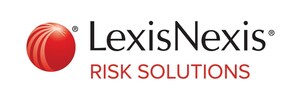ATLANTA, May 2, 2017 /PRNewswire/ -- The millions of U.S. small businesses are critical drivers of long-term economic growth that is sustainable; in fact, small businesses currently account for creating two out of every three jobs across the nation.1 Lenders, which reined in small business lending during the economic recession, are once again competing to provide small business credit cards, working capital lines of credit and other types of loans to small companies and startups as a way to expand and buoy profitable portfolios. In an emerging trend, more and more lenders are eschewing using only credit bureau-based forms of assessing creditworthiness for more predictive models that are based on alternative data blended with traditional business payment data and B2B trade credit information.
In LexisNexis® Risk Solutions "Ask the Small Business Experts" series, Ben Cutler, the company's head of Small Business Risk, sat down with David O'Connell, senior analyst, Aite Group, to discuss the state of small businesses today. Below is an excerpt from that conversation.
Ben Cutler, LexisNexis Risk Solutions: Aite Group recently conducted a survey of small businesses with up to $20 million in revenue. A question in the survey asked the principals whether a lender recently denied them credit and why. What were the results, and were you surprised by the answers small businesses shared?
David O'Connell, Aite Group: The top two answers were what you might expect; 39 percent of principals attributed their credit decline to the newness of their company; similarly, 37 percent of principals blamed the decline on the lack of a lengthy credit history. In this, I detect frustration on the part of SMBs, who feel that their credit evaluations should be based on a bigger set of data points than is currently the case. They probably don't know that they are a "thin file" or "no file" applicant, but they want lenders to perform broader evaluations of themselves, their businesses and their cash flows.
The third most selected answer did surprise me, though. Of the credit-seeking small businesses surveyed, (19 percent) indicated that they didn't think banks knew enough about their businesses. There is so much information that can be detected about a small business these days, especially when you think about all the types of analytics out there such as sentiment testing. By this I mean tapping into all the data sources out there--from public filings on principals to what folks are saying on the Web--to perform a broad evaluation on the credit worthiness of that SMB.
If a lender applies sentiment testing across an individual small business, its principals, its customers and its geography, a wide net is cast and banks should be able to learn a lot about any SMB and find the false positives. For example, using different types of testing could prove that the businesses flagged as credit risks as a result of binary facts, like traditional credit scores built by credit bureaus, are credit worthy and fit into plenty of lenders' risk appetites.
Cutler: At LexisNexis Risk Solutions, we've recently introduced into the marketplace new small business credit scores and small business credit reports, which we built using alternative data. Lenders are already using these products to address what you mentioned earlier – a company that is "too new" and a company without "a lengthy credit history." How can banks make use of the results of your study?
O'Connell: Lenders really need to complement traditional metrics such as ratings bureau data and financial results with alternative data and a more granular take on longevity, which may be indicated by transaction volume rather than time itself. Doing so will not only make for a fuller credit analysis, it will also create a customer experience desired by credit-seeking SMBs. When asked about how they decided where to apply for credit, 52% of credit-seeking SMBs said that a lender's ability to perform a credit evaluation on factors other than just ratings bureau data was "very important."
Cutler: Your survey also asked whether small business principals currently mix, or have mixed in the recent past, their personal and business operations. Tell us more about the answer.
O'Connell: I have to say I was surprised that only 20 percent of principals at credit-seeking small businesses had not mixed assets in some way. It seems that one would want to have a firewall between their company, their personal lives, their personal assets and the assets upon which their families rely. Nevertheless, there's little risk associated with bankruptcy these days, so I suppose people perceive little risk here. I was encouraged that 41 percent of principals had used their personal funds to fund the business. This motivates the principals and the creditors to have a successful, cash flow positive business, which is obviously a good thing. However, the mixing of physical assets is a little concerning. If I'm a bank, I don't think I want to finance real estate, cars or other equipment that are in use by something other than the business I'm financing. And in this, I think banks need to worry about not just the founder or the CEO, but all the principals and decision makers at an SMB. It is critical that a lender identify and understand all of the the entities, cash flows, ownerships and people associated with the business.
Cutler: What should banks do now to attract and lend to more small businesses?
O'Connell: Get the cheapest capital they can. It turns out that price and terms are two of the most important determinants that influence where small business principals apply and where they close. The next big determinant is process, and this is an area where the various classes of credit provider examined by Aite Group were found to possess little competitive advantage relative to one another. Although banks are a bit faster when it comes to responding to credit applications when they are an applicant's primary deposit bank, alternative lenders are often faster with loan documentation. But for both processes, no provider category had a significant competitive advantage. This means that the customer experience is still up for grabs and requires investments by all categories of credit provider.
Cutler: Please shed light on any other insights about small business credit risk assessment that the survey conveyed.
O'Connell: Lenders need to prepare for combat. The small business lending market is about a half trillion-dollar market. The pendulum has shifted back in favor of the borrower; it is a borrower's market. Small business principals are perceptive, patient and opportunistic. By this, I mean most seek credit weeks or months in advance of a credit need. Our study showed that principals submitted more than six applications on average over the last two years and are very price sensitive. Lenders need to hone their pricing, lower their capital costs and make their processes as "Amazon" as possible.
About LexisNexis® Risk Solutions
At LexisNexis Risk Solutions, we believe in the power of data and advanced analytics for better risk management. With over 40 years of expertise, we are the trusted data analytics provider for organizations seeking actionable insights to manage risks and improve results while upholding the highest standards for security and privacy. Headquartered in metro Atlanta, LexisNexis Risk Solutions serves customers in more than 100 countries and is part of RELX Group, a global provider of information and analytics for professional and business customers across industries. For more information, please visit www.lexisnexisrisk.com.
1 http://www.hbs.edu/faculty/Publication%20Files/15-004_09b1bf8b-eb2a-4e63-9c4e-0374f770856f.pdf
SOURCE LexisNexis Risk Solutions
Related Links
WANT YOUR COMPANY'S NEWS FEATURED ON PRNEWSWIRE.COM?
Newsrooms &
Influencers
Digital Media
Outlets
Journalists
Opted In





Share this article